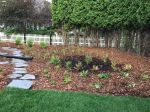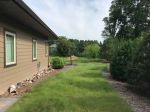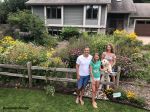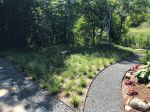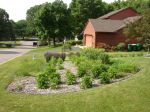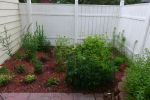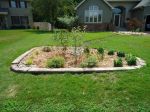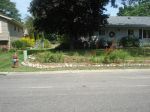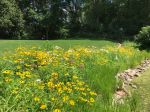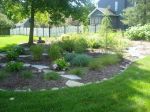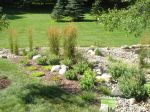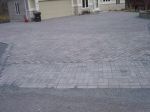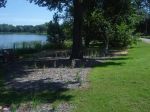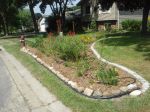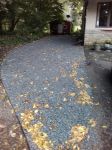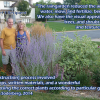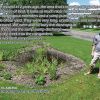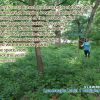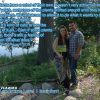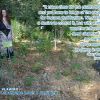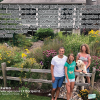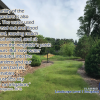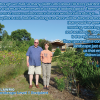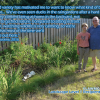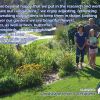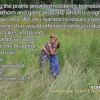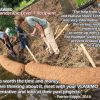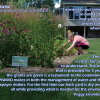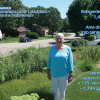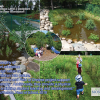LANDSCAPE GRANTS
Interested in reducing stormwater runoff and flooding, preventing erosion, and reducing pollutants entering waterways? A VLAWMO Landscape Grant may be available to support installing a water quality improvement project, or Best Management Practice (BMP), that will benefit our lakes, streams, and wetlands.
Find out if you live or work in the VLAWMO watershed through our interactive web map.
The VLAWMO Landscape grant programs have been renewed for 2024, which include the Soil Health, Landscape Level 1, and Landscape Level 2 programs. If you would like to apply for a grant, please contact staff in the application section below to schedule a site visit at your property.
Site visits must be scheduled prior to submitting an application for any of the grant programs. Site visits will resume April 8, 2024, or when temperatures are over 45º and snow cover has melted.
Applications will be accepted until grant funding is depleted on a first come, first served basis. Please refer to the grant guidance documents provided, and consult with staff for application assistance.
Landscape Level 1
Maximum $5,000
$7,500 for curb cut raingardens
The Landscape Level 1 Grant Program funds Best Management Practices (BMP) projects that treat stormwater and improve water quality. Eligible project types can be viewed at the drop-down icon below or the Landscape Level 1 Policy for specific details on eligibility and grant terms. These projects help support the VLAWMO Comprehensive Watershed Management Plan. This is a reimbursement grant program that may reimburse 25-50% of the cost of materials and approved labor, up to $5,000 or 75% up to $7,500 for curb cut raingardens. Funding is limited and is renewed annually. Applications are funded on a first come, first served basis.
If you have a project that may qualify for Landscape Level 1 grant funding, please contact Lauren Sampedro (contact information below) to schedule a site visit on your property to discuss your project. Site visits will resume in spring 2024. It is requested that grant applications are not submitted before meeting and discussing with staff.
lauren.sampedro@vlawmo.org, 651-204-6071
To view and download the Landscape Level 1 application, click here. After a site visit has been completed, please submit your application to staff by email, mail, or in-person at the Vadnais Heights City Hall.
Landscape Level 2
Landscape Level 2 Grant Policy & Application
The Landscape Level 2 (LL2) Grant Program provides funding for eligible large-scale or highly beneficial projects that significantly improve water quality, increase flood storage, conserve groundwater, or provide regional benefits in partnership with municipalities, public agencies, private businesses, homeowner's associations, or nonprofit organizations. This grant may provide 25-75% of eligible project costs, or up to 90% for highly beneficial projects. This program prioritizes partnerships in the community and projects that are in targeted areas in VLAWMO's Watershed Management Plan, Sustainable Lake Management Plans/Reports, or other feasibility reports.
Past LL2 projects included a parking lot raingarden at Bridgewood Park in the City of Vadnais Heights and a residential curb cut raingarden added during a street reconstruction project in the City of White Bear Lake.
For more information about the grant program and how to apply, view the Landscape Level 2 Grant Policy & Application.
Soil Health Grant
Maximum $1,000
$1,250 if within priority zone
Soil Health Grant Policy & Application
The Soil Health Grant Program funds smaller scale projects such as native plantings, downspout raingardens, native plant buffer strips, turf replacement, and stabilization projects that protect and enhance water quality and native habitat. Projects that treat stormwater on a neighborhood or greater scale may qualify for the larger Landscape Level 1 or Level 2 grant programs.
This is a reimbursement grant program that may reimburse up to 75% of the cost of project materials and approved labor, up to an amount of $1,000, or $1,250 if within a Targeted Priority Zone. Funding is limited and is renewed annually. Applications are funded on a first come, first served basis.
If you have a project that may qualify for a Soil Health Grant, please contact staff to schedule a site visit on your property to discuss your project. Site visits will resume in spring 2024. Review the drop-down icon below and the Soil Health Grant Policy for specific details on eligibility and grant terms. For planting plan templates, visit the BWSR Residential Pollinator Habitat resource page.
Download the Soil Health Grant application here.
Targeted Priority Zones:
For Soil Health and Landscape Level 1 Grants
The Soil Health and Landscape Level 1 Grant Programs may include special funding for projects geographically located within targeted areas of the VLAWMO watershed. Priority zone areas include the Targeted Volume Reductions Zone (TVRZ) and Targeted Habitat Priority Zone (THPZ).
Why Target Areas?
Targeted Habitat Priority Zones are locations that have been identified by the Minnesota DNR as either a Native Plant Community that has been minimally affected by human development and should be preserved, or high-potential areas for Rusty Patched Bumblebee habitat that should be preserved or restored. In these areas, VLAWMO may incentivize native and pollinator habitat plantings by offering Soil Health Grant funding up to $1,250, with a 25% applicant cash match. Grant program staff are available to help determine if an applicant meets the requirements for incentivized Targeted Priority Zone funding.
The Targeted Volume Reduction Zones have been identified as areas where stormwater runoff capture and reduction via raingardens or infiltration projects are a special priority to reduce flooding. If the proposed project is within the TVRZ, a higher grant award may be considered.
How to Get Started:
To find if your project is located in either priority zone, enter your address into VLAWMO's Interactive GIS Map and select "Cost Share Targeted Volume Reduction Zones" or "Cost Share Targeted Habitat Priority Zones" within the layer list on the right of the map.
To view and download the Landscape Grant program applications and policies, please see the sections above. Once you have consulted with staff and a site visit has been completed, please submit your completed application to Lauren Sampedro either electronically via email, or by paper copy either mailed or in-person to:
VLAWMO Office
800 County Road E East
Vadnais Heights, MN 55127
Examples of Completed Grant Projects

Neighborhood Spotlights
Dozens of residents have used the Landscape Grant programs to improve their properties and the watershed. Read about the stories behind the projects here.


